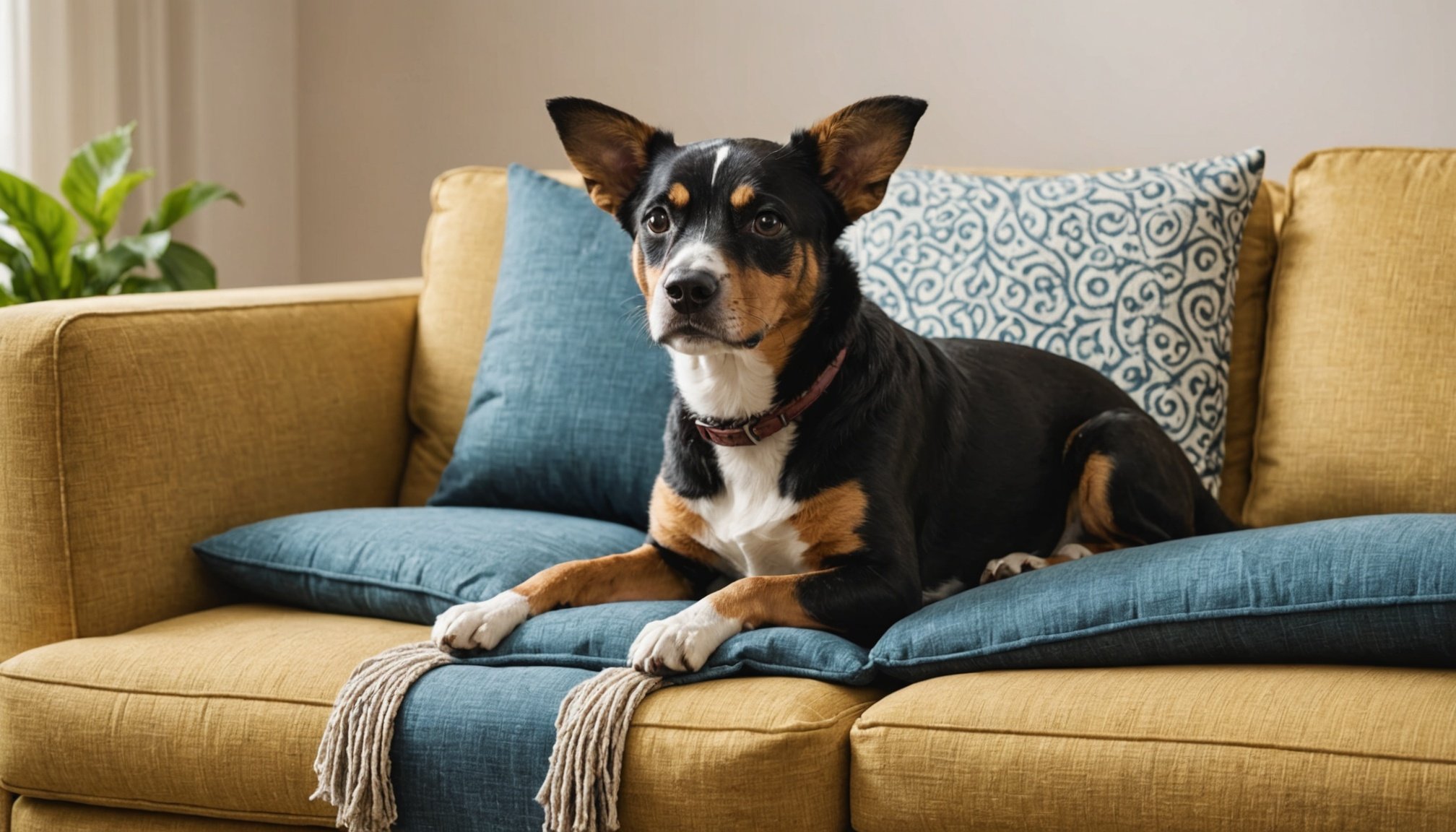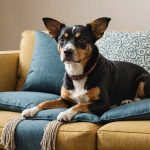Understanding Pet-Friendly Upholstery Fabrics
Selecting the right pet-friendly fabrics for your home is essential for balancing style with functionality. A key attribute of these fabrics is their upholstery durability. This ensures they withstand wear and tear caused by pets’ claws, fur, and occasional messes. Fabric types that cater to pet owners often include those materials resistant to scratches and stains, making maintenance easier.
Pet-friendly fabrics are distinguished by characteristics such as tight weaves and smooth surfaces that deter fur accumulation. Choosing durable materials benefits homeowners by reducing the frequency and cost of replacements and repairs. These materials not only offer longevity but also maintain their appearance over time despite the challenges posed by pets.
Also read : Transform Your Small Studio: Innovative Fold-Away Bed Solutions for Smart Living
When evaluating various fabric types, consider options like microfiber, leather, and canvas, which are revered for their robustness and ease of cleaning. Each type presents unique advantages: microfiber’s resistance to scratching, leather’s wipe-clean simplicity, and canvas’s resilience. Opting for these materials not only caters to the practical needs of pet owners but also complements the aesthetic appeal of your living space, blending practicality with style.
Durability of Different Fabric Types
When considering pet-friendly fabrics, understanding the upholstery durability of different options is crucial for homeowners. Different fabric types offer varying degrees of resilience and ease of maintenance, making some more suited for pet environments than others.
Also read : Transform Your Home: Ultimate Space-Saving Tips That Will Revolutionize Your Living Area
Natural Fabrics
Natural fabrics like cotton, linen, and wool have their unique characteristics. While cotton is breathable and offers a soft touch, it may not be the best at withstanding pet claws. Linen provides a textured look but can snag easily. Wool is warm and repels dirt but might attract pet hair. These fabrics typically require more care in terms of cleaning and maintenance. Regular vacuuming can help limit fur accumulation, but these fabrics might not offer the best performance in high-pet-activity areas.
Synthetic Fabrics
Synthetic options, such as polyester and nylon, stand out for their upholstery durability. These materials are often stain-resistant and can handle pet messes better than natural alternatives. Additionally, they are generally easier to clean, often needing just a quick wipe down. However, they might not feel as luxurious as natural fabrics and can sometimes lack breathability.
Blends and Specialty Fabrics
Innovative fabric blends combine the best of both worlds, offering durability and a pleasing aesthetic. These can be highly beneficial for pet households, as they are designed to endure the rigours of pet life while maintaining appeal. Some are even created with sustainable practices, considering the environmental impact of their production.
Cleaning and Maintenance Tips
Maintaining pet-friendly fabrics is key to preserving their appearance and longevity. Regular fabric care can help mitigate the involuntary messes that come with pet ownership. Begin with routine vacuuming to reduce fur buildup and dander. For addressing pet-related stains, choose cleaning products specifically designed for upholstery. These products effectively break down enzymes in stains, aiding in efficient removal.
Spot cleaning with a tiny amount of water and a mild detergent can also be effective. Dab, don’t rub, the spot to avoid spreading the stain further.
For tougher stains, using a steam cleaner can be a more intensive solution, tackling deeply rooted dirt while refreshing the fabric’s feel. However, it’s crucial to check the manufacturer’s guidelines before employing any method, as some materials may have different care requirements.
To maintain the fabric’s appearance and durability, rotate cushions periodically to balance wear, and consider using protective covers that can be removed and washed. These practices not only protect your upholstery but also ensure your furniture remains a welcoming space for both you and your pets.
Color and Design Recommendations
Selecting the right color selection for pet-friendly upholstery isn’t just about aesthetics; it’s about practicality. Darker tones and patterned designs tend to mask pet hair and dirt, making them ideal for pet owners. Consider opting for color palettes that naturally blend with your pet’s fur to minimize visibility.
Popular design trends currently emphasize natural shades and earth tones, which elegantly conceal minor stains. As a result, maintaining a polished look becomes more achievable without frequent cleaning. These trends also complement various home styles, from modern to rustic, allowing for versatile styling choices.
Incorporating creative patterns and textures adds depth and interest to your furniture while being functional. Textured fabrics like tweed or herringbone not only enhance home aesthetics but also help in hiding imperfections. Bold patterns can further distract from any pet-related blemishes while maintaining a stylish appearance.
Ultimately, investing in thoughtfully chosen colors and designs not only enhances the look of your living space but also caters to the demands of pet ownership, ensuring a harmonious balance between style and practicality.
Real-Life Examples of Pet-Friendly Upholstery
Understanding how pet-friendly fabrics perform in real-life settings can illuminate their benefits and applications in your home. Case studies highlight successful fabric choices, showcasing how durable materials withstand the challenges of daily pet activities. One such example is the use of microfiber in families with playful pets. Its tight weave and stain resistance have proven effective in keeping furniture free from scratches and dirt.
Owners also often choose leather, appreciating its easy-to-clean surface, making post-pet-mess clean-ups quick and hassle-free. Testimonials often praise canvas for its robust nature, particularly in homes with multiple pets. Its resilience against wear and tear, coupled with its texture, offers a snug and welcoming environment.
Visual examples from pet owners reveal stylish yet durable furnishings, illustrating how blending practicality with aesthetic choices is achievable. Among these, patterned couches that cleverly disguise pet hair and stains are commonly favored. These examples demonstrate that selecting the right fabric types contributes to an inviting and pet-accommodating living space. Embracing real-life learnings from fellow pet owners can guide you toward informed decisions tailored to your specific household needs.
Common Issues and FAQs
Pet owners often face challenges with pet-related issues in their homes, impacting their choices for upholstery. Among the most frequent queries is how to select fabrics that withstand pets’ activities. Troubleshooting fabric choices involves understanding a fabric’s resistance to claws and stains. Ensuring upholstery durability is crucial in extending the lifespan of furniture.
Addressing concerns about fur accumulation, experts recommend fabrics with tight weaves, as they repel hair more efficiently. Another common inquiry regards maintenance – regular vacuuming and prompt spot cleaning aid in preserving fabric.
Some pet owners wonder if they can enjoy luxurious textures without compromising durability. The answer is yes; specialty fabrics and fabric blends offer resilience and a plush feel. Additionally, concerns about environmental impact arise, with many opting for sustainably produced materials that balance eco-friendliness with robust performance.
For those unclear about troubleshooting fabric against scratching, microfiber and leather stand out as practical options. These materials are less susceptible to damage, offering pets a forgiving surface. When selecting the right upholstery, consult professionals who can guide choices tailored to your household needs.







